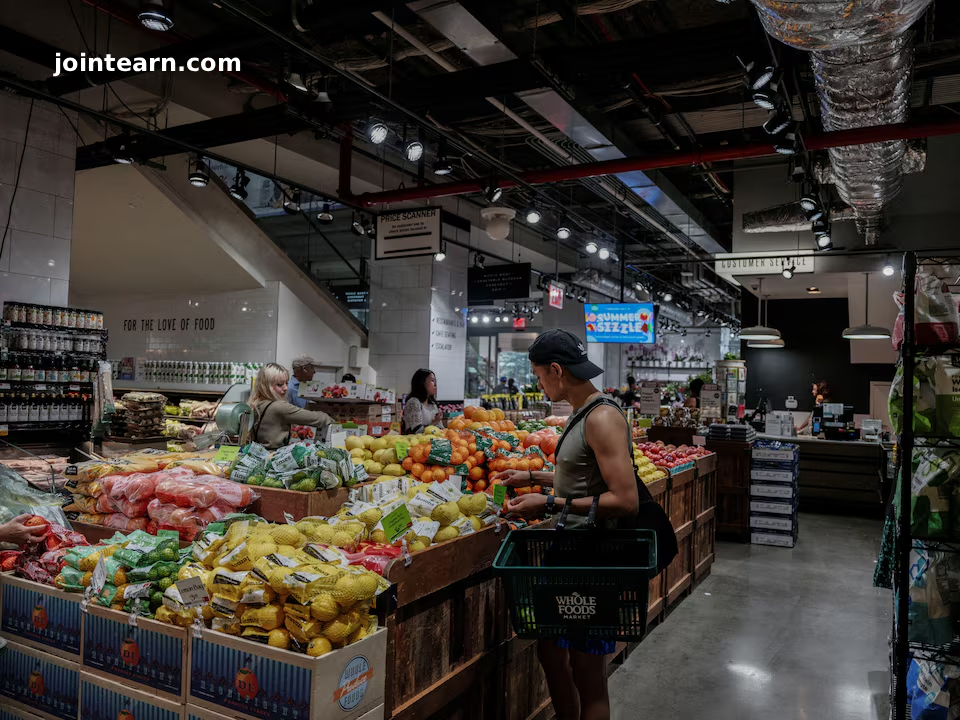
U.S. consumer inflation showed signs of easing in September, as the latest Labor Department data revealed a smaller-than-expected increase in the Consumer Price Index (CPI). The report highlights a mixed picture of inflation pressures, including a surge in gasoline prices offset by moderation in housing costs. Meanwhile, a U.S. government shutdown threatens to disrupt the publication of next month’s inflation report, raising concerns among economists and policymakers.
Key Highlights
- Consumer Price Index (CPI) increased 0.3% in September
- Year-over-year consumer inflation advanced 3.0%
- Core CPI (excluding food and energy) gained 0.2%
- Year-over-year core inflation rose 3.0%
Inflation Eases in September
The Consumer Price Index rose by 0.3% in September, down from 0.4% in August, reflecting a moderation in price increases across several sectors. Gasoline prices surged by 4.1%, the largest contributor to the monthly CPI increase. At the same time, rents and housing-related costs grew at a slower pace, easing pressure on overall inflation.
Food prices increased by 0.2%, following a 0.5% jump in August. Grocery store prices climbed 0.3%, with cereals and nonalcoholic beverages rising 0.7%. Beef prices grew 1.2%, though this was below the 2.7% spike in August, while coffee prices dipped slightly by 0.1%. Compared to September 2024, beef prices were up 14.7% and coffee soared 18.9%, reflecting the lingering effects of droughts and tariffs.
Core Inflation Moderation
Excluding volatile food and energy components, the core CPI rose 0.2%, down from 0.3% in August. Slower rent inflation was a key factor. Owners’ equivalent rent, a major driver of core inflation, grew just 0.1%, the smallest increase since January 2021.
Other key sectors saw slower price growth as well:
- Hotel and motel rooms: +1.3% (down from 2.3% in August)
- Airline tickets: +2.7% (down from 5.9% in August)
However, tariffs on imports continued to impact consumer prices:
- Apparel prices: +0.7%
- Appliances: +0.8%
- Furniture and bedding: +0.9%
Economists note that businesses have absorbed much of the import tariff costs, but as inventory replenishment continues, prices may continue rising into 2026.
Economic Context and Federal Reserve Outlook
The Federal Reserve closely monitors the Personal Consumption Expenditures (PCE) price index to target a 2% inflation rate. The latest CPI report suggests that inflation pressures are easing slightly, supporting expectations that the Fed may lower its benchmark overnight interest rate by 25 basis points to 3.75%-4.00% next week.
Olu Sonola, head of U.S. economic research at Fitch Ratings, described the report as a “sigh of relief” for the Fed. He noted that tariff passthrough remains muted and the focus is shifting to a weakening labor market, setting the stage for a potential insurance rate cut.
Government Shutdown Disrupts Inflation Reporting
The September report was published amid challenges caused by the U.S. government shutdown, which disrupted economic data collection. The shutdown, which affected the Social Security Administration, initially delayed the report from its original October 15 release date.
The White House warned that October’s CPI report might not be published at all, a first in U.S. history, due to suspended data collection. This has raised concerns over the quality of future economic data and the ability of policymakers to make informed decisions.
During the 2013 government shutdown, approximately 75% of October CPI data was collected. Current constraints in staffing and budget cuts further complicate accurate inflation measurement.
Market Reactions
- U.S. stocks opened higher following the report
- The U.S. dollar slipped against major currencies
- Longer-term Treasury yields rose
Despite the temporary reprieve, investors remain cautious about the lack of reliable data in the coming months, which could affect market stability and policy decisions.
Outlook for Consumers and Businesses
Economists predict that while the Fed may act to ease borrowing costs, tariff-driven price increases and supply chain adjustments will keep inflation pressures present in specific sectors. Retailers like Walmart report higher costs as they replenish inventory at post-tariff prices. Consumers may experience moderate price growth for apparel, appliances, and furniture, while energy and housing costs remain the primary drivers of headline inflation.


Leave a Reply